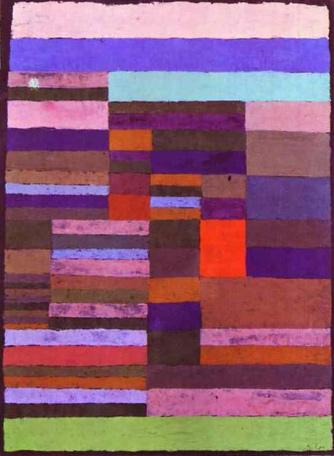Paul Klee's painting Individualized Altimetry of Stripes was once owned by Alfred Flechtheim.
The German art dealer first tried to establish a business relationship with Klee in 1919. That was not successful because at the time, Klee already had a contract with Hans Goltz. Klee was locked in to that contract until 1925.
Despite being contracted with Goltz, Klee was able to build a mutually profitable agreement with Flechtheim by sending works to him which were available for sale by commission. When he was free from his contract in 1925, Klee decided to negotiate with gallery owners directly.
Individualized Altimetry of Stripes was completed in 1930. By then, both the artist and art dealer had gone through several ups and downs. Eventually some of his Klee's works which were left with various gallery owners were returned at his behest.
Klee created using pastels. The pastel pigments were then fixed to the paper by using a paste made of flour. This is a little bit unusual for him since he tended to prefer using watercolours.
He also used printing techniques quite often. In this case, his choice of pastels gives the work a wonderful texture. Viewers who enjoy the smooth look of both oil and chalk pastels are likely to enjoy this piece, which looks beautiful in any size.
Several rectangles of colour are used to create this piece. This is an interesting departure from some of Klee's other abstract pieces, which tend to rely heavily on the use of squares.
While that is interesting and can be used to produce a smooth wave of colour, as in Architecture Of The Plain, it is nice to see the artist using another geometric form.
The rectangles are arranged in different directions. Some are horizontal, forming barriers which help to separate the composition into different sections. Others are vertical and appear to play the role of pillars, supporting the entire structure.
The stripes are laid out in such way that it is easy to examine the depth and shape of each of them individually. By using four paste with the pigment, Klee ensures that the stripes will not blend together. The dimensions of each one are clearly seen. They can be appreciated for their inherent beauty.




